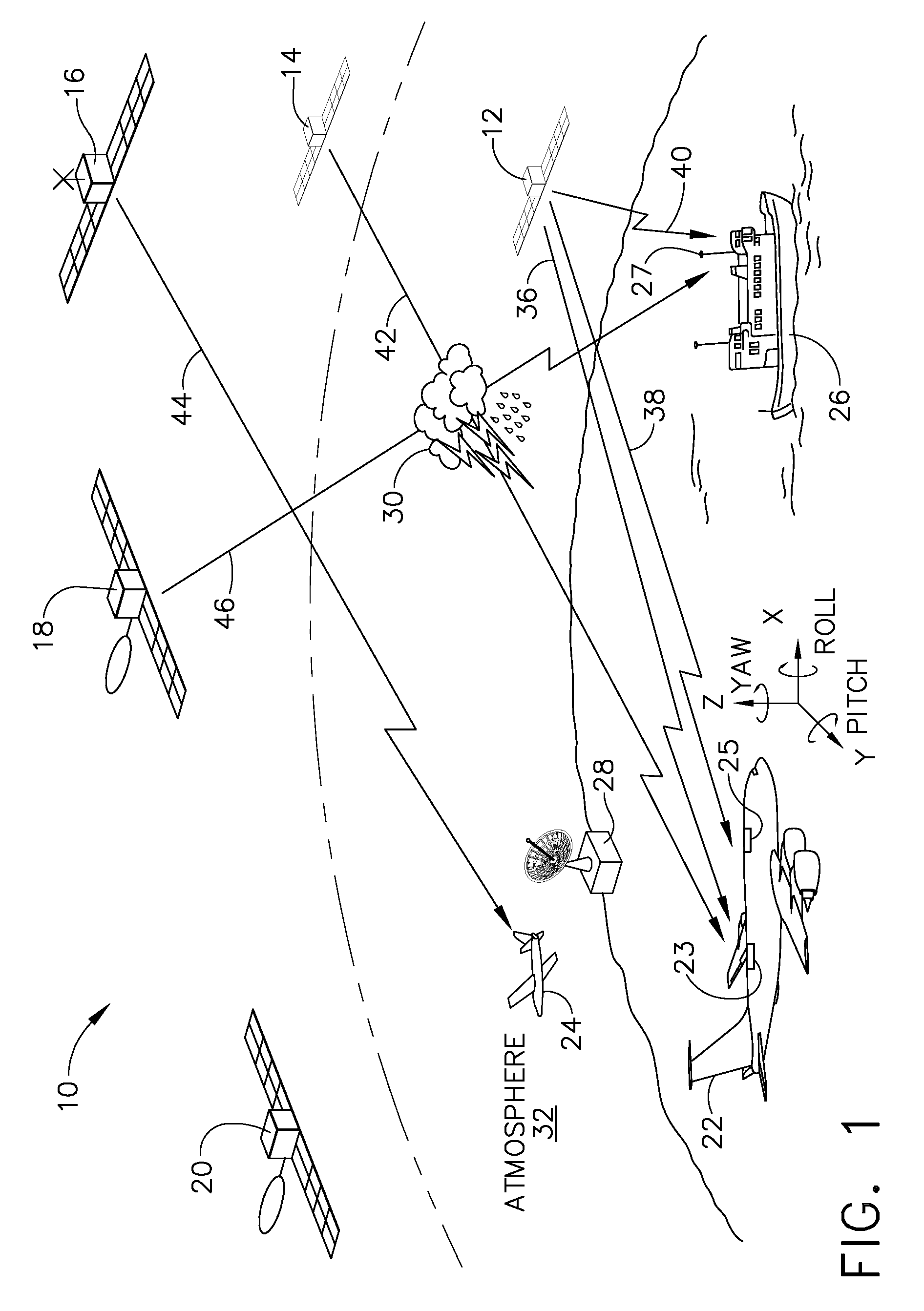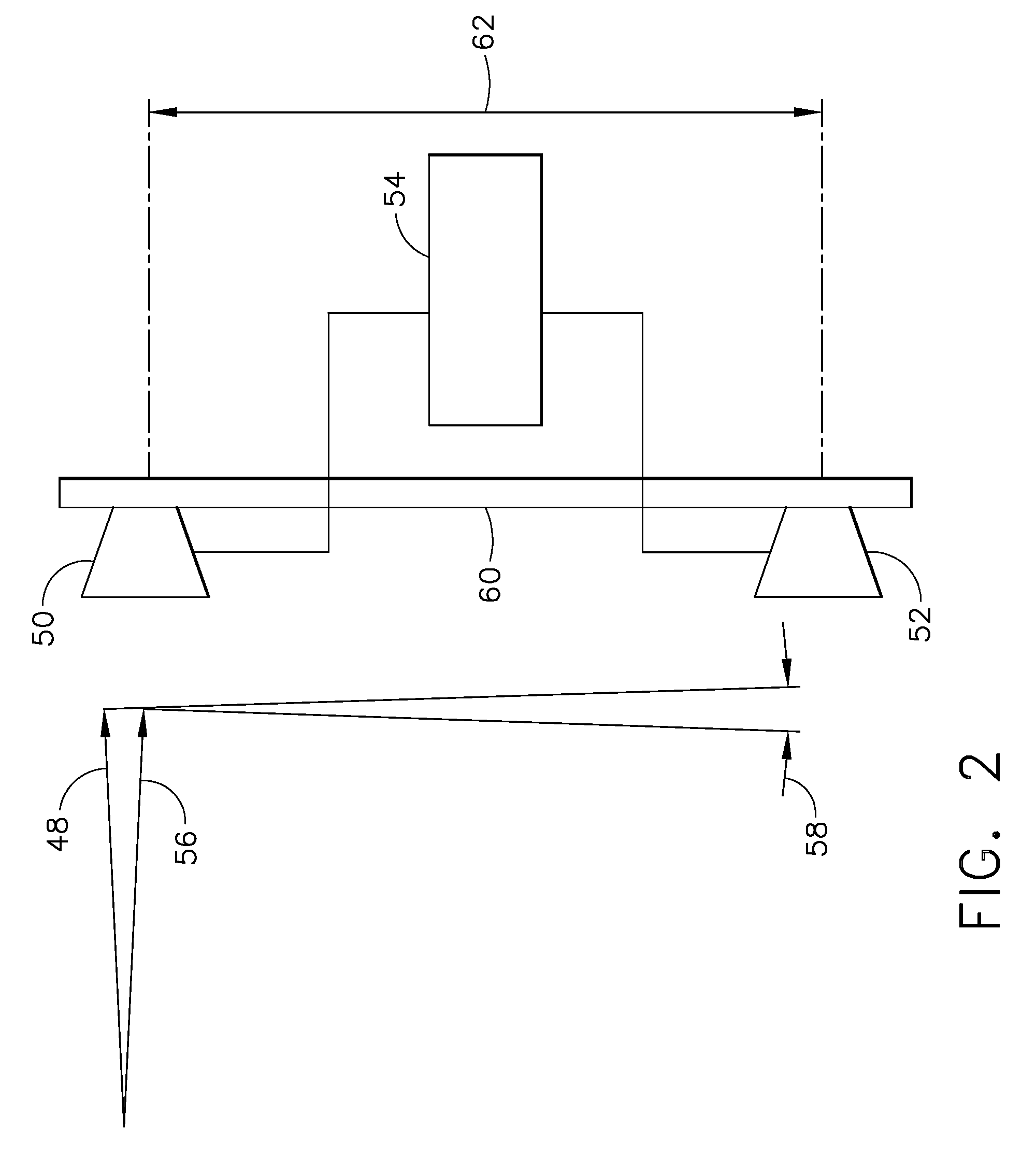Refractivity Retrieval Via Direct Measurement of GNSS Bending Angle
- Summary
- Abstract
- Description
- Claims
- Application Information
AI Technical Summary
Benefits of technology
Problems solved by technology
Method used
Image
Examples
Embodiment Construction
[0026]Many modern aircraft use radio-positioning signals broadcast from satellites (e.g. GPS, GLONASS, GALILEO) for navigation. It is to be understood that while the term GNSS is used throughout the detailed description of the invention, any one of the available satellite systems may be used with the present invention. While any one signal only conveys information regarding the changes in atmospheric properties along its own path, the large number of GNSS receivers and satellites currently in use provide a plethora of measurements of atmospheric properties along the numerous paths between these devices. By collecting data and information from all of these signals, more accurate weather prediction forecasts and models can be produced.
[0027]It has been shown that the index of refraction is related to the properties of air as follows:
(n−1)33 106=a1P / T+a2Pw / T2 Equation 1
[0028]where:[0029]n=index of refraction[0030]T=Air Temperature[0031]P=Air Pressure[0032]Pw=Water Vapor Pressure[0033...
PUM
 Login to View More
Login to View More Abstract
Description
Claims
Application Information
 Login to View More
Login to View More - R&D
- Intellectual Property
- Life Sciences
- Materials
- Tech Scout
- Unparalleled Data Quality
- Higher Quality Content
- 60% Fewer Hallucinations
Browse by: Latest US Patents, China's latest patents, Technical Efficacy Thesaurus, Application Domain, Technology Topic, Popular Technical Reports.
© 2025 PatSnap. All rights reserved.Legal|Privacy policy|Modern Slavery Act Transparency Statement|Sitemap|About US| Contact US: help@patsnap.com



